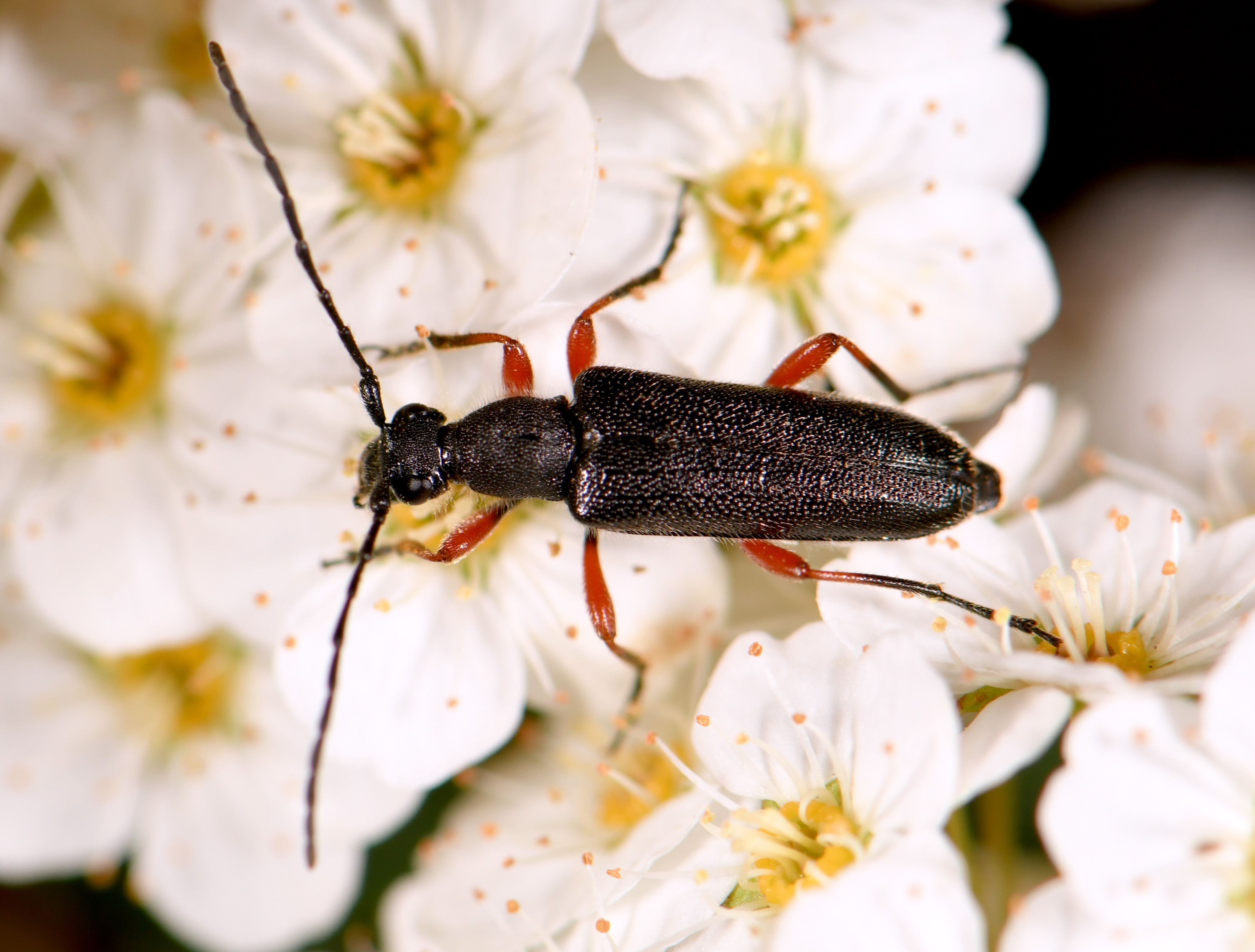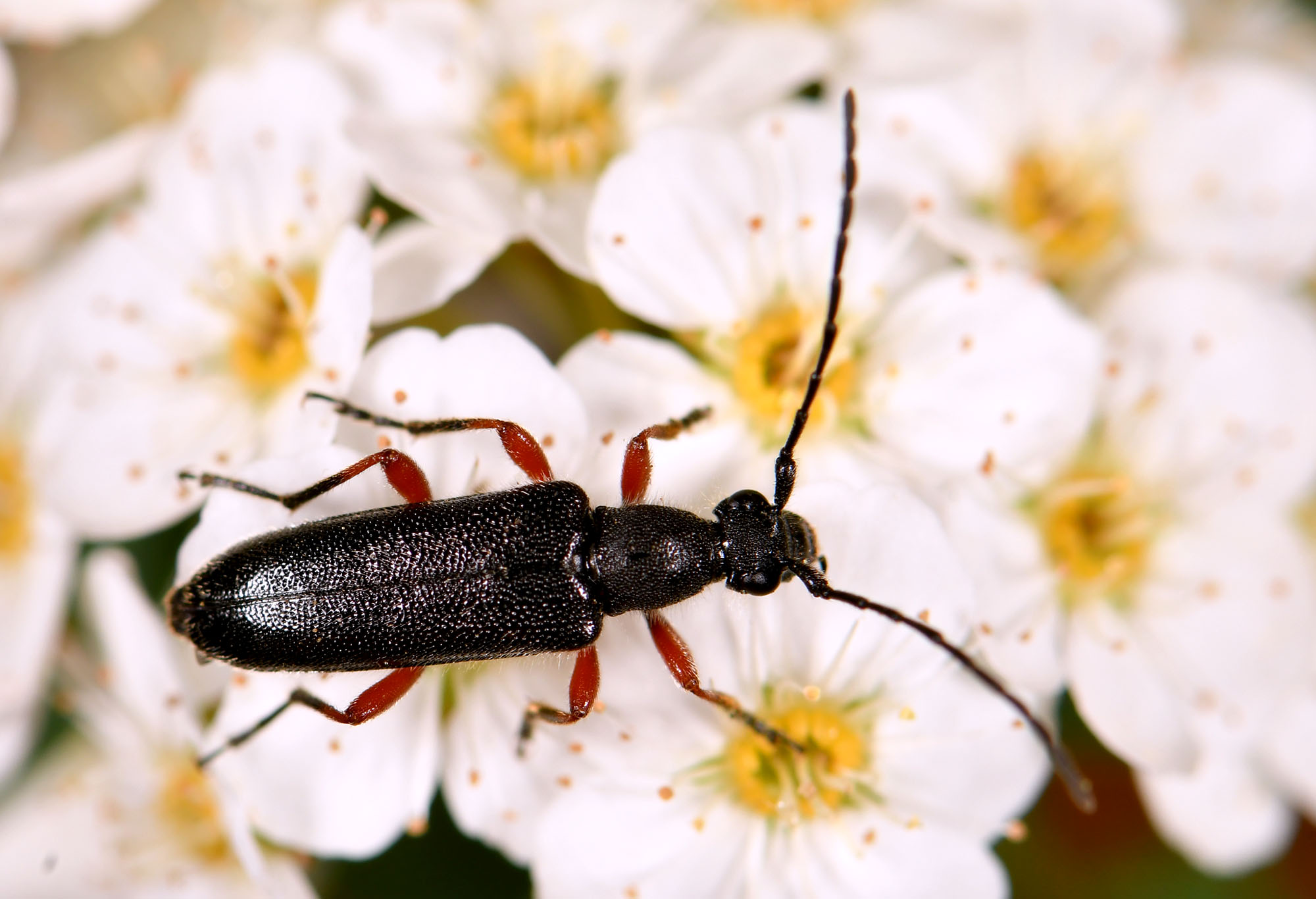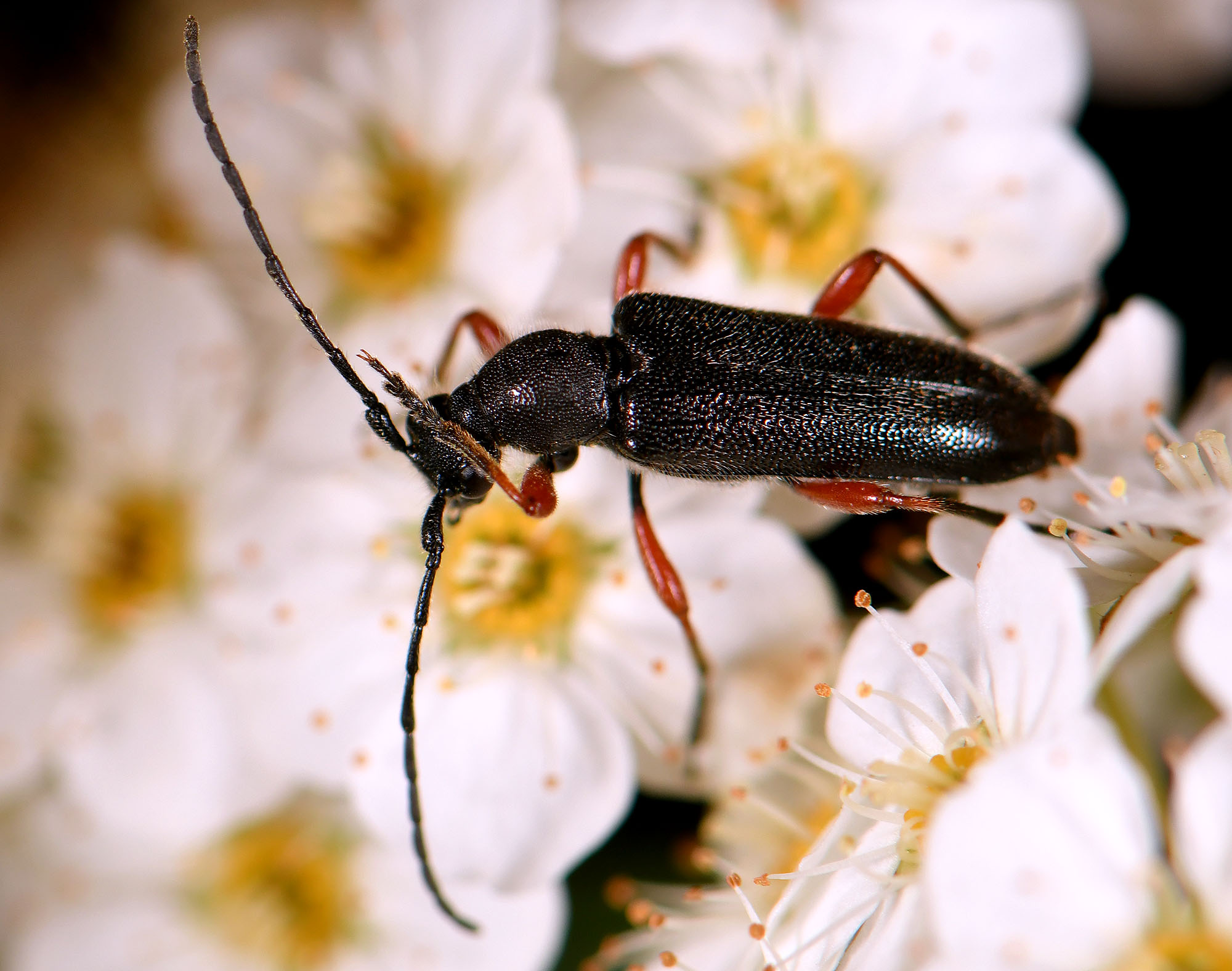ssp. rufipes (Schaller, 1783)
[= Leptura atra Fabricius, 1775]
[= Leptura rufipes Schaller, 1783]
[= Leptura Villosa Schönherr, 1817]
Subfamilia: LEPTURINAE / Tribus: LEPTURINI

[Photo © Michal Hoskovec]
Anoplodera rufipes, a widely distributed thermophilic Euro-Anatolian species, has been described as Leptura rufipes from Halle environs (Germany) by Johann Gottlob Schaller in 1783 [❖]
According to Rejzek and Rébl [1999; ✧] the biology of Anoplodera rufipes resembles to some extent that of Pedostrangalia revestita and Anisarthron barbipes and larvae of these three species frequently occur together. The host plant of Anoplodera rufipes is mainly oak in Central Europe. Larvae of this species feed in dead red-brown and relatively moist wood in close contact with living tissue, such as the bases of dead branches surrounded by living callus. Later-instar larvae penetrate into the drier part of the dead substrate more distal to the living tissue where they also pupate. This area of the larval substrate differs visibly from the moist wood in its fungal infestation, and is consequently of a different colour; usually yellow white. The pupal cell generally lies near the surface of the dead wood, and as a result, the freshly hatched beetle needs to make only a short exit gallery. On the contrary, the entire development of Pedostrangalia revestita, including pupation, takes place in the moist red-brown substrate, frequently deep behind the living tissue, and the adult exit gallery is, usually, therefore substantially longer. Moreover, in the case of Pedostrangalia revestita the pupal cell as well as the larval galleries are filled with long red wood fibres created by the larvae. Larvae of Anoplodera rufipes never create these fibres. Adults, active in May and June, are diurnal and anthophilous.
Body length: ♂♂ 7 - 12 mm / ♂♂ 9 - 14.5 mm Life cycle: 2 years Adults in: May - June Host plant: polyphagous in deciduous trees (prefers Quercus spp., but also in Fagus, Betula) Distribution: Europe, Caucasus, Turkey, Iran
The depicted female beetle was beaten from hawthorn (Crataegus) in Žloukovice village environs (Beroun district, Central Bohemia, Czechia) on May 24, 2021.Collected by Michal Hoskovec
[❖]
Schaller J.G.:
Neue Insekten beschrieben.
Schriften der naturforschenden Gesellschaft zu Halle 1: 217-328, 1783. [download]
[✧]
Rejzek M., Rébl K.:
Cerambycidae of Křivoklátsko Biosphere Reserve (Central Bohemia) (Insecta: Coleoptera).
Mitteilungen des Internationalen Entomologischen Vereins e. V., Frankfurt a. Main, Supplement VI: 1–69, 1999.Sláma M.E.F.:
Tesaříkovití – Cerambycidae České republiky a Slovenské republiky / Cerambycidae of the Czech Republic and Slovak Republic.
Milan Sláma private printing, Krhanice, 383pp [pages 238-239], 1998 [ISBN: 80-238-2627-1]. [download]
Vitali F.:
Atlas of the Insects of the Grand-Duchy of Luxembourg: Coleoptera, Cerambycidae.
Ferrantia, Musée national d’histoire naturelle, Luxembourg 79: 1-208 [pages 80-81], 2018. [download]


[Photo © Michal Hoskovec]
| Subfamilia | Lepturinae Latreille, 1802 |
| Tribus | Lepturini Latreille, 1804 |
| Genus | Anoplodera Mulsant, 1839 |
| Subgenus | Anoplodera Mulsant, 1839 |
| Species | Anoplodera (Anoplodera) rufipes (Schaller, 1783) |
| Subspecies | Anoplodera (Anoplodera) rufipes rufipes (Schaller, 1783) |
